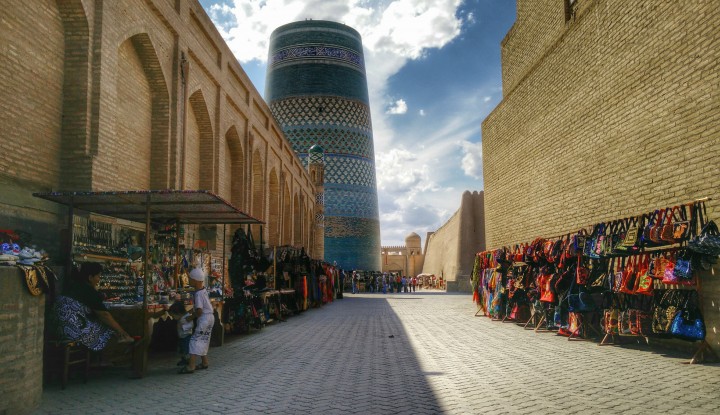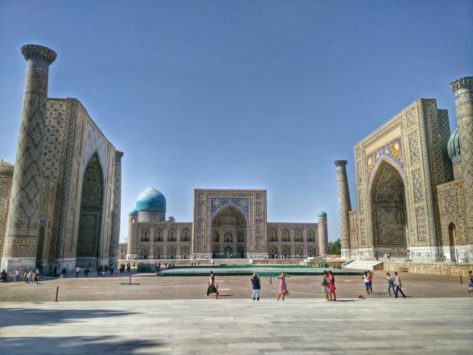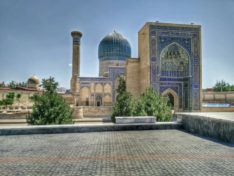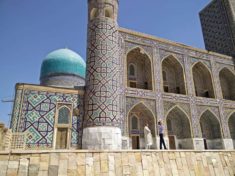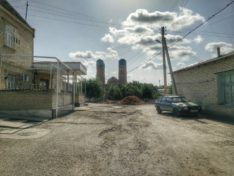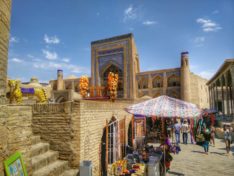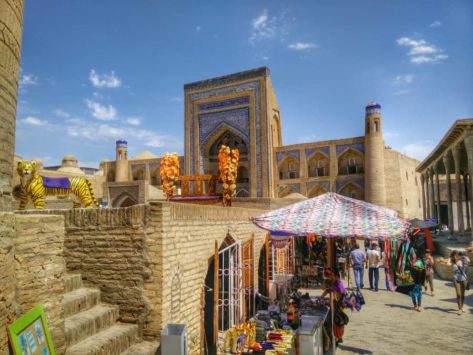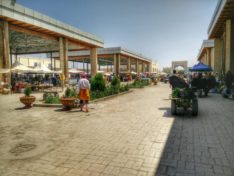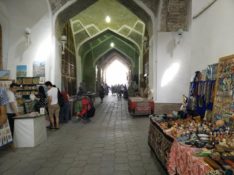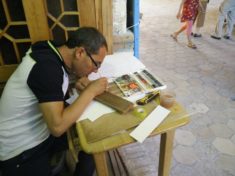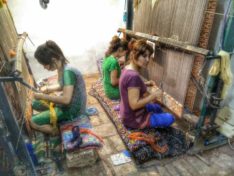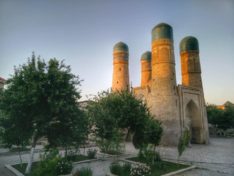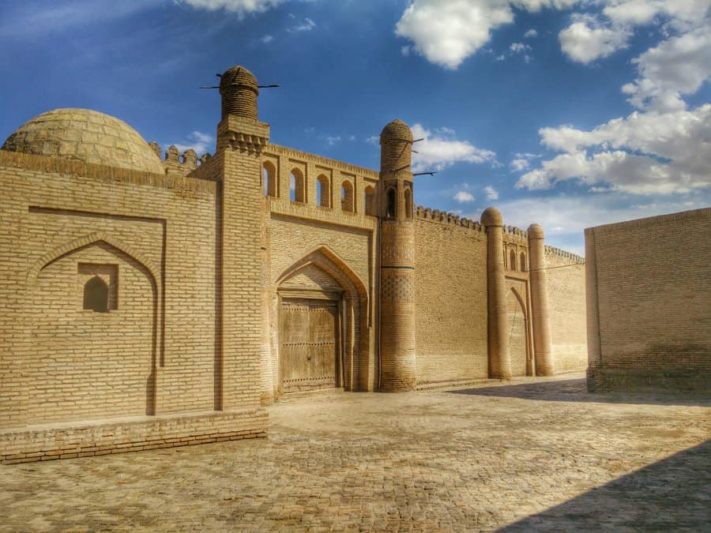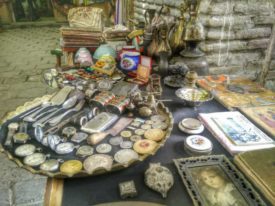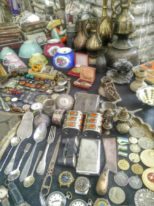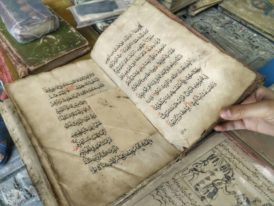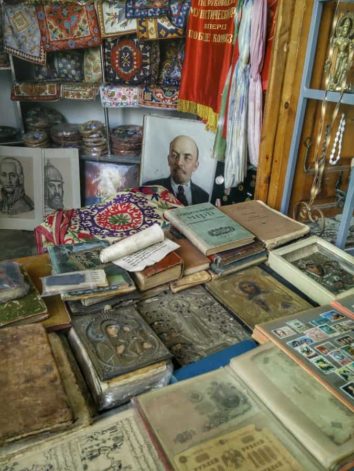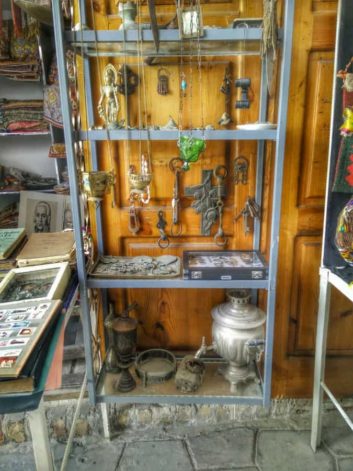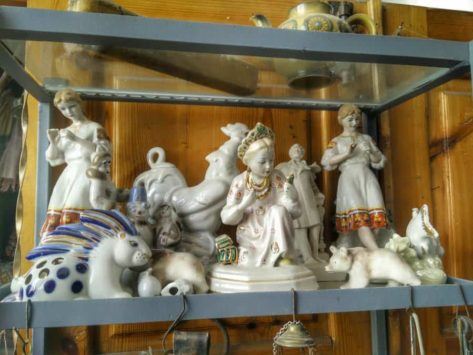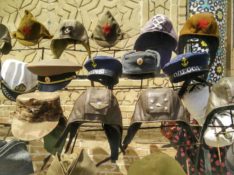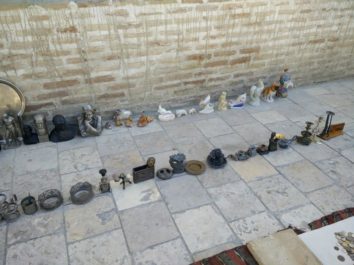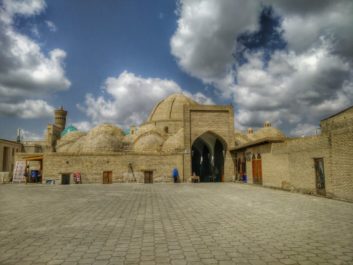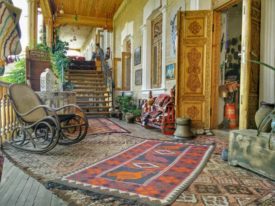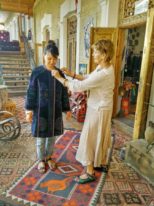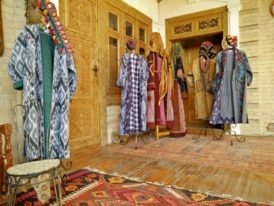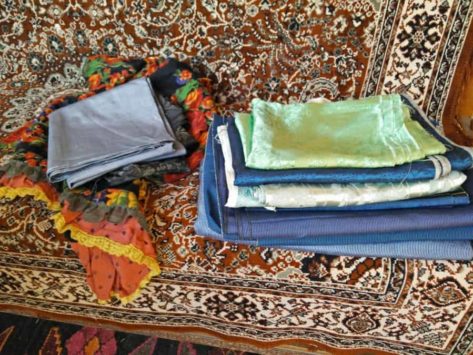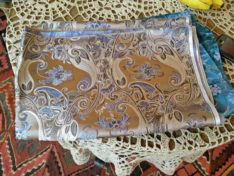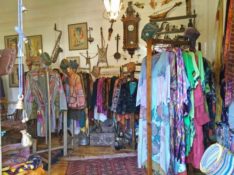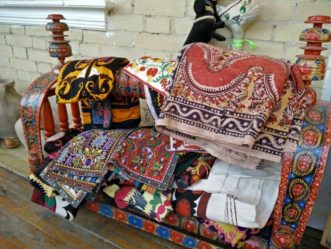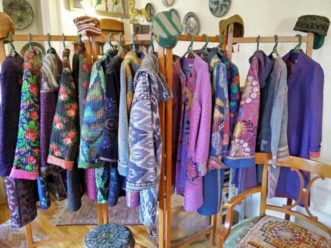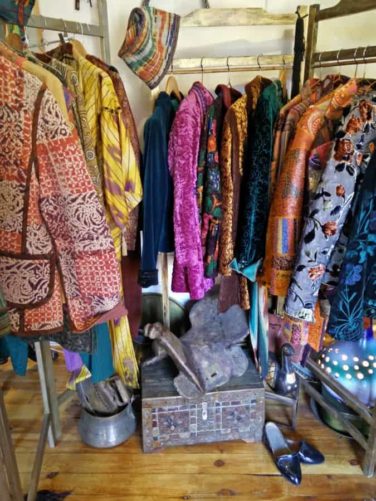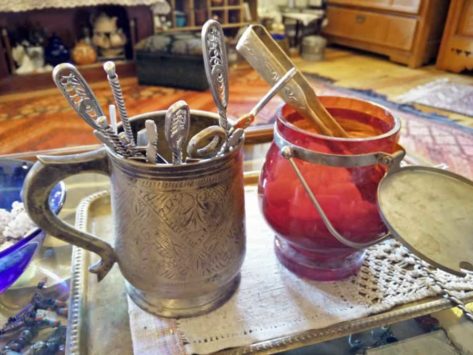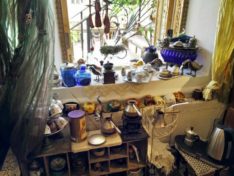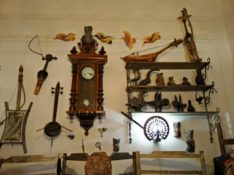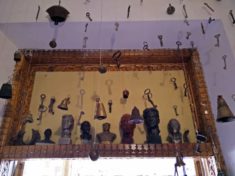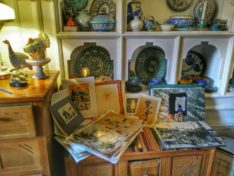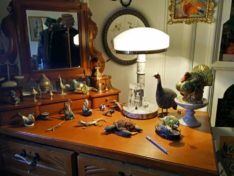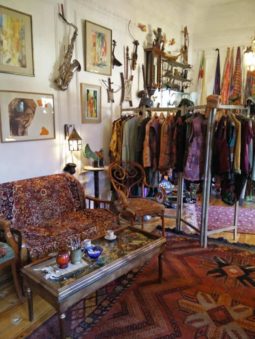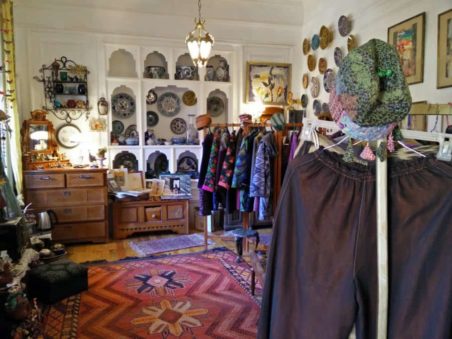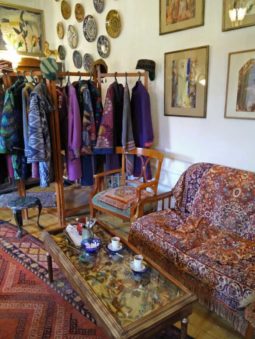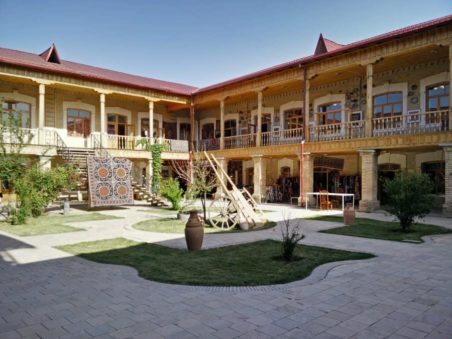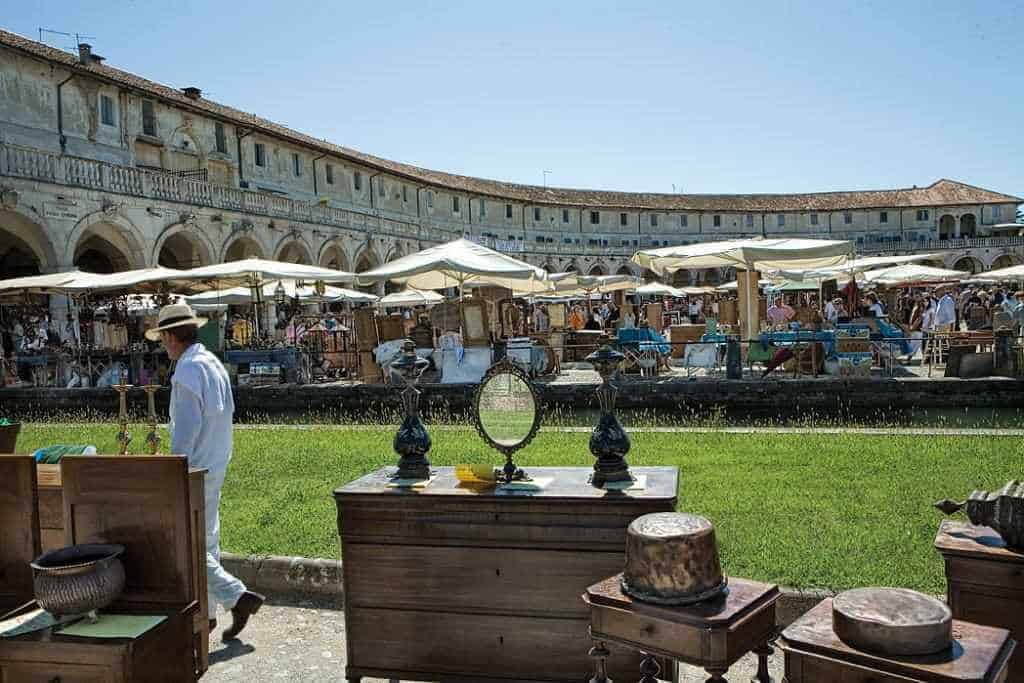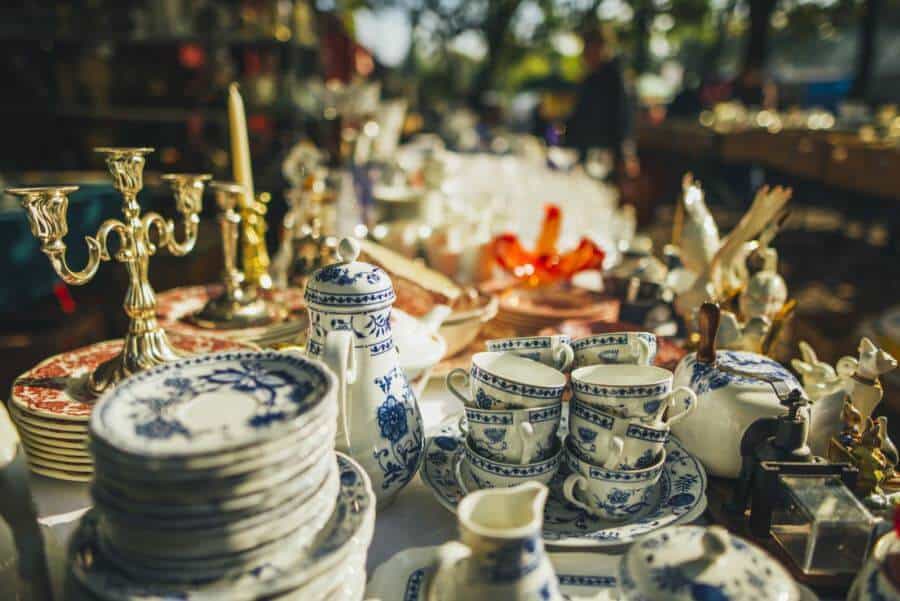To many people, Uzbekistan is known to be a land of steppes, deserts and cotton fields irrigated by the indomitable Amu Darya River, and governed by an iron fist. For history enthusiasts and the avid readers of Marco Polo’s adventures, on the other hand, Uzbekistan is a nation with a rich cultural heritage, whose city-lights once were major stopovers on the greatest trade routes since ancient times: the Golden Road, the Royal Way and the legendary Silk Road. While traveling the “Silk Road”, you will find dozens of colorful local Uzbek market selling arts & crafts as well as the kind of stuff that can be found at swap meets. But if you’re looking for real antiques, there’s only a handful of places selling them.
As a matter of fact, the “country of the Uzbeks” is precisely located at a commercial crossroad extending west to Persia, east to China, and south to India. Centuries after centuries, three essential stopovers have remained, impersonated by some of the most beautiful cities in this part of the globe: Khiva the small, graceful and delicate “museum city” in the north; Samarkand the majestic imperial capital city in the south, and, midway, Bukhara the-trading-post.
Each of these cities has its own specialties when it comes to art objects & craftsmanship. While Bukhara is most famous for its painting on silk paper and its astrakhan coats, the purest Silk products and the most delicate pottery come from the Ferghana Valley. Last but not least, Samarkand is the place for beautiful embroideries and needlework known as “Suzanis“ as well as genuine vintage silk clothing.
Where to find real antiques in Uzbekistan
That’s a tricky question. According to Uzbek law, antiques are not supposed to be sold to foreigners because of national heritage protection issues. And every travel guide will warn you against doing this.
For instance, in the travel book The Golden Road to Samarkand (Macleod & Mayhew), it is clearly mentioned that Uzbek “custom staff are most concerned with preventing the export of antiques (officially anything over 50 years old or of high cultural value). In practice […] custom officers often question anything remotely old, although their motives are sometimes suspect. Even brand new carpets and embroidery can draw suspicion.”
Technically in those circumstances, anything you purchase (old or new) could potentially be taken away from you by an over-zealous customs officer (who will also check your suitcase if you’re taking an inland flight). Now, custom officers almost systematically check the luggage of tourists who are traveling on their own and outside of rush hour. If you are flying out of Uzbekistan from Tashkent, together with hundreds of other tourists, custom officers will likely be less mindful (all the more so as most outbound flights are scheduled after midnight). This could be your opportunity window to bring back some more “vintage” items.
It goes without saying that we’re not encouraging you in any circumstances to export objects with a high historical or archaeological value; this is a prohibited and immoral practice. But saying that anything which has been made before 1965 can’t be taken out of the country, makes no sense to me. A hundred years old would be more adequate, than 50.
Now, if you’re asking where you should go to try your luck at finding “vintage collectibles”, there are two places in Uzbekistan which are particularly interesting from a flea market perspective: the cities of Bukhara and Samarkand.
Bukhara
This is where antiques and vintage enthusiasts will make some great purchases. The Madrasah whose cells where once formerly reserved for students, are now home to merchants and the finest artisans. Silks, jewelry, astrakhan coats, antiques, art objects or delicate craftsmanship, including painting on silk paper are some of the most common items sold in Bukhara.
The Bazaar’s jewelers, are nowadays housed in the former Indian caravanserai, which was also used back then by Hindu moneylenders; and fur artisans spread along the city’s streets, selling impressive hats made of wolf fur or curly lamb wool.
Bukhara also hosts a very interesting modest (in size) flea market which overflows with antique treasures covering a broad time span: from 200 years old Korans and century old silk paper paintings, to memorabilia of the communist area, old black & white picture and antique weapons, Bukhara’s flea market is a treasure trove for rare items of a bygone era.
Samarkand
Uzbekistan is nowadays the third largest producer of silk in the world. Silk and Uzbek ikat never cease to inspire designers. From Dries Van Noten to Gabriella Cortese (the creator of the chic ethnic brand Antik Batik worn by Carla Bruni and Vanessa Paradis), designers regularly shop for raw materials and inspiration directly in Uzbekistan. And if Margilan, in the Fergana Valley, is silk’s historic home, Samarkand is its window on the world.
One place in Samarkand which is particularly renowned for the quality of its vintage silk garments, is the “Schastivaya ptitsa” (Happy Bird) Art Gallery, an exquisite artistic salon for connoisseurs of national art. Housed in a historic building of a caravanserai of the last century, Happy Bird showcases a large selection of luxury Uzbek handmade carpets, clothes in a traditional style, vintage jewelry, paintings, blue-white and brown-green mottled pottery, figurines, drawings, and stunning suzanis embroidered with ingenious patterns (most of which have been passed down from generation to generation).
These are surprisingly affordable for all but the tightest budgets, but doing business is not the primary purpose of the Art Gallery. The feeling of joy and harmony is what Lena Ladik, the gallery’s owner, seeks to share.
A widely traveled, but a long term Samarkand resident of Ukrainian origin, Lena is delightful to talk to. The shop itself tells wonderful stories, as it is decorated with fine decor items of the 19th and 20th century, originating from local flea markets – most of the items on display in the boutique, can be purchased. There is no wondering why this place has been written up in magazines in Europe and in the US!
Note: The Happy Bird Art Gallery, founded in 2005, is a member of the Central Asian Crafts Support Association (CACSA) and, “Hunarmand”, the Republican Association of Craftsmen and Artisans. “Happy Bird”, in addition to the permanent exhibition, also hosts solo exhibitions and master classes of both Uzbek and foreign authors. Furthermore the Art Gallery organizes exhibitions abroad. The main principles of the Gallery is the promotion of Uzbek folk arts and crafts, using only locally produced natural material, fair remuneration of labor, support of gifted and motivated authors.
Address: 43a, Tashkentskaya str, Samarkand
Phone: (+99866) 233-15-48, (+99893) 720-42-15
Working hours: every day from 10:00 a.m. to 07:00 p.m.
Web-site: www.asianart.uz/

